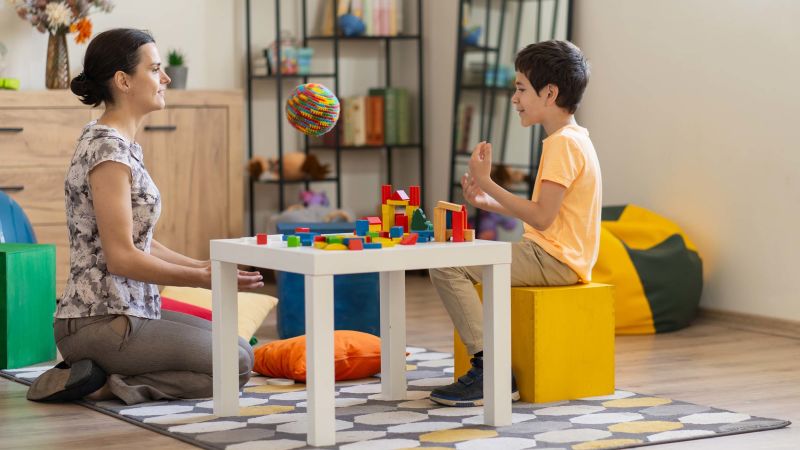Health
Autism Diagnosis Rates Rise, Prompting Calls for Inclusivity

The diagnosis rates of Autism Spectrum Disorder (ASD) are on the rise, prompting discussions about inclusivity and support for those affected. According to the latest data from the Centers for Disease Control and Prevention (CDC), released in April 2025, approximately 1 in 31 children in the United States are diagnosed with autism by age eight, a notable increase from 1 in 36 in 2023. This trend reflects a growing recognition of the condition across diverse communities.
The perception of autism has shifted significantly since the 1990s when it was considered rare, affecting about 1 in 500 children. A pivotal study in 1998 found that the prevalence was closer to 1 in 150 children, a figure that was confirmed in subsequent research by the Autism and Developmental Disabilities Monitoring Network. This network was established to track autism prevalence and has provided critical insights into how the condition manifests in various communities.
Understanding the Rise in Diagnoses
Recent statistics indicate that autism affects children across all demographics, regardless of race, ethnicity, or income level. However, geographical variability exists. In California, the diagnosis rate is around 1 in 19 children, while in Texas, it varies from 1 in 103 to 1 in 51. In Arizona, where the author resides, the rate stands at approximately 1 in 32, aligning closely with the national average.
This variability may stem from differences in community awareness, availability of services, and cultural attitudes towards mental health. Over the years, the gap in diagnosis rates between boys and girls has also narrowed. In the late 1990s, the ratio was four boys diagnosed for every girl. The latest figures show a reduced ratio of 3.4 to 1, indicating an improved understanding of how autism presents differently in girls, leading to more accurate diagnoses.
While concerns about rising diagnosis rates persist, research suggests that many children diagnosed with autism can lead fulfilling lives. A 2022 study indicated that a majority of children with autism expect to pursue higher education, illustrating their aspirations and capabilities.
Creating Inclusive Communities
The increasing recognition of autism is not merely a statistical concern; it serves as a call to action for building inclusive communities. Autistic individuals often face unique challenges, including social communication difficulties and restricted interests. Yet, they also possess strengths, such as creative thinking and problem-solving abilities. Notable figures like Temple Grandin, an advocate and professor, and actor Dan Aykroyd, have demonstrated how autism can contribute to significant achievements.
To foster inclusive environments, it is essential to highlight both the strengths and challenges associated with autism. Policymakers and community leaders can take steps to create vibrant spaces where individuals with autism can thrive alongside their neurotypical peers. This could involve implementing specialized training for educators and healthcare providers, ensuring that they understand the needs of autistic individuals.
Cities like Mesa, Arizona, which became the first to achieve autism certification in 2019, exemplify proactive approaches to inclusivity. Such certification involves collaboration among stakeholders in healthcare, education, and local government to develop supportive infrastructures for those with autism.
As the understanding of autism evolves, it is crucial to recognize that children diagnosed with autism today will become adults with autism in the future. This necessitates the development of robust support systems that cater to their ongoing needs. Employment programs that focus on training, hiring, and retaining workers with disabilities can promote economic independence for individuals with autism.
The rise in autism diagnoses should not be viewed with trepidation but rather as an opportunity to cultivate a society that values diverse ways of thinking. With thoughtful policies and community initiatives, it is possible to create a world where everyone, regardless of their neurological makeup, can flourish.
-

 Top Stories1 week ago
Top Stories1 week agoMarc Buoniconti’s Legacy: 40 Years Later, Lives Transformed
-

 Sports3 weeks ago
Sports3 weeks agoSteve Kerr Supports Jonathan Kuminga After Ejection in Preseason Game
-

 Politics3 weeks ago
Politics3 weeks agoDallin H. Oaks Assumes Leadership of Latter-day Saints Church
-

 Science3 weeks ago
Science3 weeks agoChicago’s Viral ‘Rat Hole’ Likely Created by Squirrel, Study Reveals
-

 Business3 weeks ago
Business3 weeks agoTyler Technologies Set to Reveal Q3 2025 Earnings on October 22
-

 Lifestyle3 weeks ago
Lifestyle3 weeks agoKelsea Ballerini Launches ‘Burn the Baggage’ Candle with Ranger Station
-

 Entertainment3 weeks ago
Entertainment3 weeks agoZoe Saldana Advocates for James Cameron’s Avatar Documentary
-

 Lifestyle3 weeks ago
Lifestyle3 weeks agoDua Lipa Celebrates Passing GCSE Spanish During World Tour
-

 Health3 weeks ago
Health3 weeks agoRichard Feldman Urges Ban on Menthol in Cigarettes and Vapes
-

 Health3 weeks ago
Health3 weeks agoCommunity Unites for Seventh Annual Mental Health Awareness Walk
-

 World3 weeks ago
World3 weeks agoD’Angelo, Iconic R&B Singer, Dies at 51 After Cancer Battle
-

 Sports3 weeks ago
Sports3 weeks agoPatriots Dominate Picks as Raiders Fall in Season Opener









